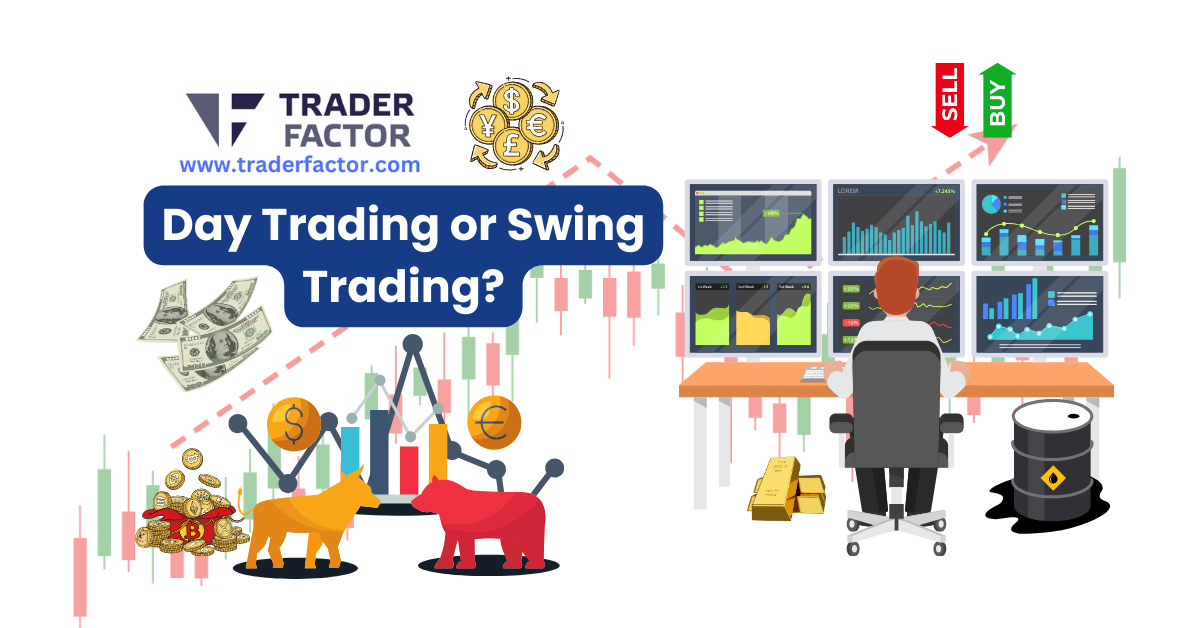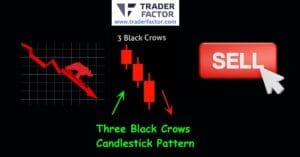Imagine you’ve just watched the market close, and your portfolio’s performance has left you smiling. This could be your everyday reality, but the question is, how do you want to play the game? You’ve got two main strategies to choose from day trading or swing trading. Day trading is a full-time job requiring constant attention and quick decisions, while swing trading allows for a more relaxed pace, holding positions from a couple of days to a few weeks. Each has its own perks and quirks, challenges and rewards. But which one aligns closely with your financial goals, lifestyle, and risk tolerance? Hold tight, as we’re about to embark on a journey to help you make that critical choice.
Table of Contents
ToggleUnderstanding Swing Trading

Let’s explore swing trading, a method in which you hold positions for several days to weeks, aiming to capture short—to medium-term gains. Timing is critical. You must know when to enter and exit trades, hence the importance of chart pattern analysis in your trading plan. This analysis helps you identify buy and stop loss points, guiding your moves in the market.
Technical indicators are your compass. They direct your trading decisions based on market sentiment and price range tools. But remember, it’s not all about the numbers. Risk assessment is a crucial part of your strategy. You must evaluate the potential downsides and prepare for them.
Capital management ties in neatly with risk assessment. You need to allocate your resources strategically to maximise profit potential. Balancing your capital and gauging the market sentiment is essential to avoid losses.
In swing trading, you aim to ride the wave of market swings, capturing profits from the oscillations. It’s a game of patience, precision, and astute judgment. So, equip yourself with the right tools, stay vigilant, and you could reap significant rewards.
Comparing Day Trading and Swing Trading

When considering your trading style, it’s essential to understand the key differences between day trading and swing trading. Both methods require a strong understanding of risk management and technical analysis, but they differ significantly in their holding periods, position sizing, and overnight exposure.
Day trading involves opening and closing positions within a single trading day, eliminating overnight exposure. It typically requires larger position sizes to profit significantly from small intraday price movements. Day traders rely heavily on real-time technical analysis and quick decision-making.

Swing trading, on the other hand, involves holding positions over several days or even weeks. This increases your overnight exposure, as market changes can occur while you’re not actively trading. Swing traders often take smaller position sizes than day traders, which can help manage risk over longer holding periods.
Swing Trading Tactics

To effectively navigate the world of swing trading, you need to master certain tactics, including the analysis of multiday chart patterns and the development of a solid trading plan. Your strategies should focus on determining entry and exit points, as well as risk management.
Start by understanding chart analysis. This involves studying price movement patterns over several days to identify potential trading opportunities. You’re looking for patterns that indicate a strong probability of price direction. This helps you pinpoint the best entry points for your trades.
Development strategies are next. A well-crafted trading plan outlines your objectives, risk tolerance, and specific criteria for entering and exiting trades. It’s your roadmap, so stick to it, but remember, it’s okay to refine it as you gain experience.

Risk management is paramount. It’s not just about making profitable trades but also protecting yourself from significant losses. This is where stop-loss placement comes into play. Setting a stop-loss order limits your potential loss if the market moves against you.
Swing trading can be profitable, but it requires time, patience, and a keen understanding of these tactics.
Indicators and Tools for Swing Trading

Equipping yourself with the right indicators and tools can greatly enhance your success in swing trading. One of the most effective tools you can use is momentum indicators. These help you gauge the speed of price changes, giving you a sense of the market’s strength or weakness.

- Momentum Indicators: Tools like the Relative Strength Index or Moving Average Convergence Divergence can provide vital information about the market’s momentum and help you identify potential reversal points.
- Price Range: Understanding the price range of your chosen asset is crucial. You must study past price action to determine the asset’s typical range.
- Market Sentiment: Monitor market sentiment. Tools that measure this, such as the Fear & Greed Index, can help you understand whether traders are feeling bullish or bearish.
- Technical Patterns: Chart patterns like “head and shoulders” or “double top” can signal potential price movements. Spotting these patterns can be a powerful tool in your trading arsenal.
- Fundamental Analysis: Lastly, don’t ignore fundamental analysis. Economic indicators, company earnings, and news events can all impact price movements. Incorporating this analysis into your strategy can provide a more thorough market understanding.
Best Practices and Securities for Swing Trading

Mastering swing trading involves knowing the best practices and selecting the right securities, which can significantly boost your trading success. Capital management is crucial in swing trading. Don’t risk more than a small percentage of your capital on a single trade. This ensures your portfolio won’t be significantly damaged even if a trade goes south.
Risk assessment is another vital aspect. Always plan when and where you will exit a trade, not just to take profits but also to cut losses. Effective market analysis helps identify promising trade opportunities. You should be well-versed in reading price charts and understanding market trends.

Lastly, efficient trade execution is key. This means not only entering a trade at the right time but also exiting it at the optimal moment to maximize your profit potential.
Remember, not every security is suitable for swing trading. Typically, you’ll want to consider liquid, volatile stocks with clear patterns.
| Best Practices | Importance | Examples |
| Capital Management | Protects portfolio | Risk a small percentage on each trade |
| Risk Assessment | Manages losses | Have an exit plan |
| Market Analysis | Identifies opportunities | Understand price charts and trends |
Frequently Asked Questions

Who Are the Best Forex Brokers?
Here are some trusted multiregulated forex brokers suitable for all styles of trading :
OneRoyal: Known for its social trading platform, OneRoyal offers many educational resources and a convenient demo account for practice.
IronFx: This broker provides a simple platform and a risk management tool, helping you better control your trading risks.
Admirals: Admirals stands out with exceptional customer support and a wide range of educational resources.
ActivTrades: Offers a user-friendly platform, extensive educational resources, and versatile demo accounts.
EightCap: EightCap wraps it up with an intuitive platform, top-notch educational materials, and an effective customer support team.

What Are the Key Psychological Traits Required for Successful Day Trading and Swing Trading?”
You’ll need emotional resilience, high-risk tolerance, effective stress management, swift decision-making skills, and a disciplined approach to trading. These traits are essential for successfully handling the unpredictable nature of the markets.
How Does Taxation Differ for Day Traders and Swing Traders?”
You’ll face different taxation strategies as a trader. Capital gains and loss deductions vary based on your trader status. It’s crucial to understand IRS guidelines to navigate these differences efficiently and maximize your returns.
What Are Some Software and Tools Recommended for Both Day Trading and Swing Trading?”
You’d benefit from automated trading platforms, forex trading software, and stock screening tools. Charting software advantages include real-time data analysis. For crypto, consider trading bots. Remember, each tool has its strengths and weaknesses.

Are Specific Industries or Sectors More Conducive to Day Trading or Swing Trading?”
Yes, sector volatility impacts both day and swing trading. Day trading in fast-paced sectors like tech is common. Swing trading often suits industries like pharma, where trends develop over time. Energy sector fluctuations can suit both.
How Does One Transition From Being a Day Trader to a Swing Trader, or Vice Versa?”
You’ll need strategy adaptation, enhanced risk management, and possibly more time commitment to transition between trading styles. Your trading education should guide this shift, and be aware that capital requirements may also change.
Conclusion
So, is it day trading or swing trading for you? That depends on your lifestyle, risk tolerance, and financial goals. Remember, day trading demands more time and capital, while swing trading allows lower-frequency trades. Whichever path you choose, equip yourself with the right strategies and tools. Trading is a journey, not a sprint. So, take your time, learn, and, most importantly, enjoy the process. Your financial future is in your hands.
Disclaimer:
All information has been prepared by TraderFactor or partners. The information does not contain a record of TraderFactor or partner’s prices or an offer of or solicitation for a transaction in any financial instrument. No representation or warranty is given as to the accuracy or completeness of this information. Any material provided does not have regard to the specific investment objective and financial situation of any person who may read it. Past performance is not a reliable indicator of future performance.
















